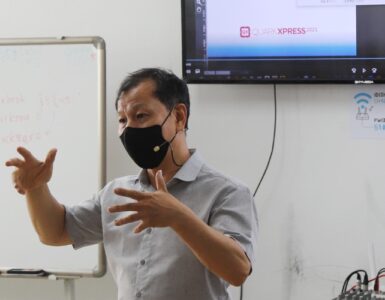In today’s digital age, social media has become an integral part of our daily lives. We use it to connect with friends and family, share our thoughts and experiences, and stay informed about the world around us. But did you know that social media can also be a powerful tool for teaching and learning?
In this blog, we’ll explore 7 ways to use social media for teaching. Whether you’re a teacher looking to engage your students in new ways, or a student seeking new learning opportunities, these tips will help you make the most of social media’s potential as a teaching tool.
Create a Class Page
Create a class page on social media platforms like Facebook, Twitter or Instagram. It can be a great way to connect with your students outside of the classroom. Here, you can post updates about upcoming tests, class schedules, and assignments.
Encourage Group Discussions
Social media platforms can also be used to create discussion groups. So, students can interact with each other and with the teacher. This can help students clarify their doubts, exchange ideas and learn from each other.
Share Educational Content
You can use social media to share educational content like blog posts, articles, and videos related to your subject. This can help your students stay updated and informed about the latest trends and developments in your subject.
Engage with Your Students
Social media platforms can be used to engage with your students. You can ask questions, create polls or surveys. Also, it’s important to respond to their comments and feedback.
Use Hashtags
Hashtags can be used to organize content and make it easier to find. You can create a unique hashtag for your class or subject. Also, encourage your students to use it when they post content related to your class.
Organize Online Quizzes
You can use social media platforms to organize online quizzes and competitions related to your subject. This can be a fun way to engage your students and encourage them to learn.
Collaborate with Other Teachers
Social media platforms can be used to collaborate with other teachers in your subject area. You can share ideas, resources and teaching strategies with each other. Also, you can learn from each other’s experiences.
Dos and Don’ts of Social Media for Teaching
While social media can be a great tool for teaching, there are some dos and don’ts that you should keep in mind.
Dos of social media for teaching
- Set clear boundaries between your personal and professional life on social media
- Monitor your students’ activity on your class page and intervene if necessary
- Encourage positive interactions and discourage cyberbullying
Don’ts of social media for teaching
- Share personal information or engage in inappropriate conversations with your students on social media
- Use social media as a replacement for traditional teaching methods
- Use social media as a platform to express your political or religious views
In conclusion, social media can be a powerful tool for teaching, but it should be used wisely. By following these dos and don’ts, you can create a safe and engaging learning environment for your students.








